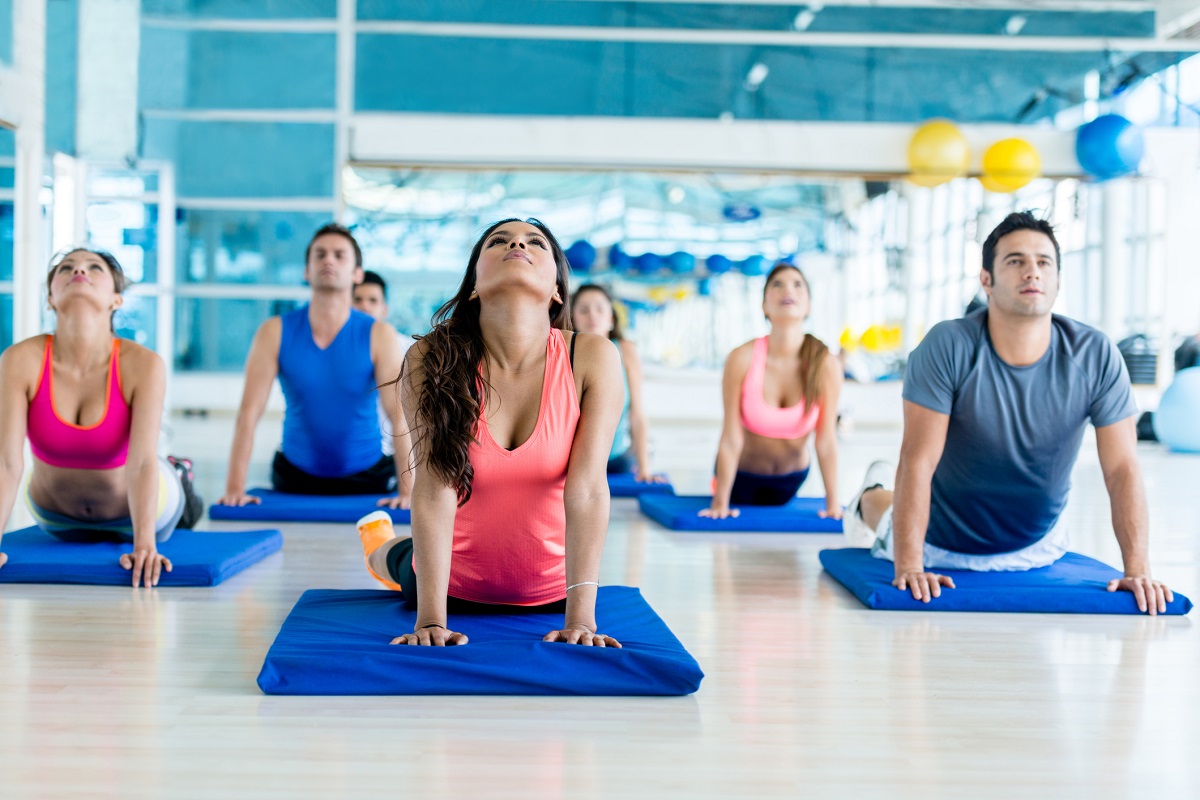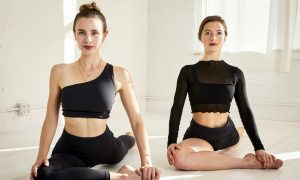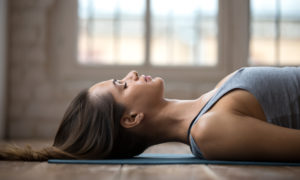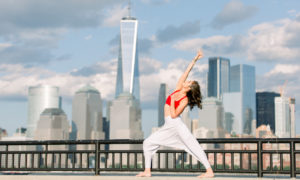Have you considered taking up yoga but don’t know where to start? It’s an ancient science of wellness, born and largely developed in India. In the past few decades, however, yoga has caught on like wildfire in Western culture. Dancers have been a big part of this trend, as they’ve sought yoga’s benefits, such as flexibility, strength, muscular integration and increased mindfulness (for the essential performance skills of focus, concentration and more). You may or may not be aware that there are many forms of yoga, from Bikram (“hot” yoga) to Restorative yoga. With so many options, how do you know what’s right for you?
First, consider your goals and needs. Are you looking to increase flexibility, aerobic capacity, or to allow your muscles some healing and rest from the demands of your rigorous dance schedule? Then, there’s simply the matter of personal preference; it’s just human nature that if you find something that you enjoy and simply feels right to you, you’re more likely to stay consistently committed to it. Here’s an outline of various yoga forms, to help give you an idea which form might best accommodate your goals and preferences. This is not an exhaustive list but instead an inventory of the most common forms.
Hatha yoga
This form does include flowing posture sequences, but Hatha more often focuses on maintaining classical yoga postures. If you’re looking to develop things like muscular integration, a healthy balance of strength and flexibility, breath awareness, and mindfulness, this form can help lead you there. If you enjoy a balance of stillness and movement, ease and challenge, you’ll enjoy practicing this style. You might be trying to develop greater comfort with stillness, not always having to move – this form can offer you a reasonably comfortable challenge toward that goal.
Vinyasa forms: Ashtanga, Forrest, Power, “Vinyasa Flow” and others
Vinyasa, or “flowing”, yoga styles are arguably the most popular form in Western culture – fitting as they are with our cultural desires to move, meet the next challenge, and achieve greater and greater accomplishments. These forms, evidently enough, also feel very comfortable for dancers because of that continuous movement quality. On the other hand, practicing these forms can challenge dancers to further develop beneficial skills such as coordinating breath more naturally with movement, and mindful control of various body parts and their actions even when moving quickly. If you choose to practice these forms, you’ll likely learn new ways of understanding the body and how it moves. What you thought you always knew about those things can truly be challenged! Whatever you might learn or experience, you can become a more integrated and healthier mover if you remain open to all of that new information.
Bikram/“Hot” Yoga
This form is similar to other Vinyasa forms but is unique in taking place in a room heated to over 90 degrees. Be prepared to sweat! Therefore, make sure to stay hydrated – taking in lots of fluids before, during (as is accessible) and after practice. The rationale behind the additional heating is that it helps to flush out toxins from the body with the resulting amount of sweating, as well as allows for greater flexibility (yes, I daresay most – if not all – dancers have found that they feel wonderfully loose and “bendy” in the warmest summer months!). Another common quality of Bikram yoga is that it is a set sequence of 26 postures. That may appeal to some dancers, while others would prefer to have their brains and bodies challenged with intriguing new sequences each class. (Side-note: Some of the prior-mentioned Vinyasa forms, such as Ashtanga, are practiced in a set sequence, while in others instructors are free to customize new sequences for each different class.)
Yin/Restorative/Gentle Yoga Forms
In these forms, you won’t quite get a “workout”, but you will most likely gain physical relaxation, breath awareness and greater somatic (physical, body) integration. Perhaps you’re dancing 20 or more hours a week, as well as cross-training, and you don’t really need additional exercise, but your muscles could certainly use gentle stretching and tissue release. Those things can help to break up lactic acid, scar tissue and sometimes even emotional baggage that we store in our tissues. (That might sound strange, but have you ever heard the phrase, “issues in the tissues”?) In Yin yoga, common yoga postures are held for two to five minutes (you read that right – but not to worry, it’s completely safe and bearable), often supported with props. Those include bolsters (like a large, slightly firmer pillow), blocks and straps. Tools like eye pillows and scented oils help to increase the relaxation response. Iyengar yoga also often calls upon props, and is taught in a similarly slow and methodical way but can sometimes be just as vigorous as Vinyasa styles. If you feel like your dancing always has you moving and your body “working”, these more restful forms might just offer you the rest and space for expanded awareness that you need.
Whatever you might choose, I suggest that you try out various forms before you come to decide on what feels right for you. Fortunately, many yoga studios now offer one or two “trial” weeks of free classes for new students. In those cases, any and all classes on their schedules are open to you to try out. Most yoga studios do offer multiple styles.
You can also do internet searches of any of the styles mentioned above, or others that you might have heard of. Most likely, you’ll find many informative written descriptions and videos of various styles. In addition, every yoga studio has a website with detailed descriptions of their class styles and overall perspectives on yoga practice. That can help you to search out studios in your local area, and find one that offers the classes that will be beneficial for you — in your dancing and in all else that you do.
By Kathryn Boland of Dance Informa.















